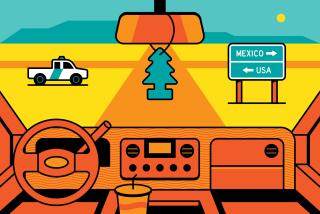
- Share via
MÉRIDA, Mexico — As the sleek new train pulled out of the station in Cancun and sped into the dense Mexican jungle, Mario Meneses held his camera to the window, capturing it all on video. The 61-year-old tour guide beamed with pride — and the sense that he was documenting history.
“You’ll see,” he told his family. “This train is going to bring people from all over the world.”
His sister Patricia, 63, scoffed. “How will this ever be profitable?” she asked, pointing to row after row of open seats. “It’s completely empty.”
How Mexicans feel about the Tren Maya (Maya Train) — a 1,000-mile railway that slices through the Yucatán — has a lot to do with how they feel about the man who built it.

The $30-billion train is the signature project of outgoing President Andrés Manuel López Obrador, who promises that it will become a major draw for tourists and an economic engine for southern Mexico. In many ways it has come to symbolize the presidency of an ambitious, often divisive leader obsessed with cementing his legacy.
A populist leftist who vowed to put “the poor first” and correct historic wrongs against the Indigenous population, López Obrador hopes to be remembered as a leader who tipped the balance of power to the working class, away from the elites.
The train, he said, would pump resources into a region that had been overlooked. When it ran into obstacles — a ballooning budget, lawsuits warning that it threatened delicate ecosystems and ancient ruins — he plowed ahead with his typical stubborn resolve and disregard for democratic norms.

First he invoked a national security decree that shielded construction from judicial scrutiny. Then he placed the military in charge of building and operating the railway.
As López Obrador prepares to leave office on Oct. 1, his tenure remains hotly debated — and so does his train.
For Patricia Meneses, the railway is an ecological tragedy and an impractical boondoggle that sucked resources from more-critical efforts like fighting crime in her native state of Chiapas, which has been consumed by a violent gang war.
For her brother, the railway is a life force that has created more than 100,000 construction jobs and will expose generations of global tourists to the rich cultures that thrived in Mexico before the Spanish invasion.
After several minutes of bickering, the siblings agreed to disagree and changed topics. And as the train chugged on through the jungle, there seemed to be some truth in each of their opposing visions.
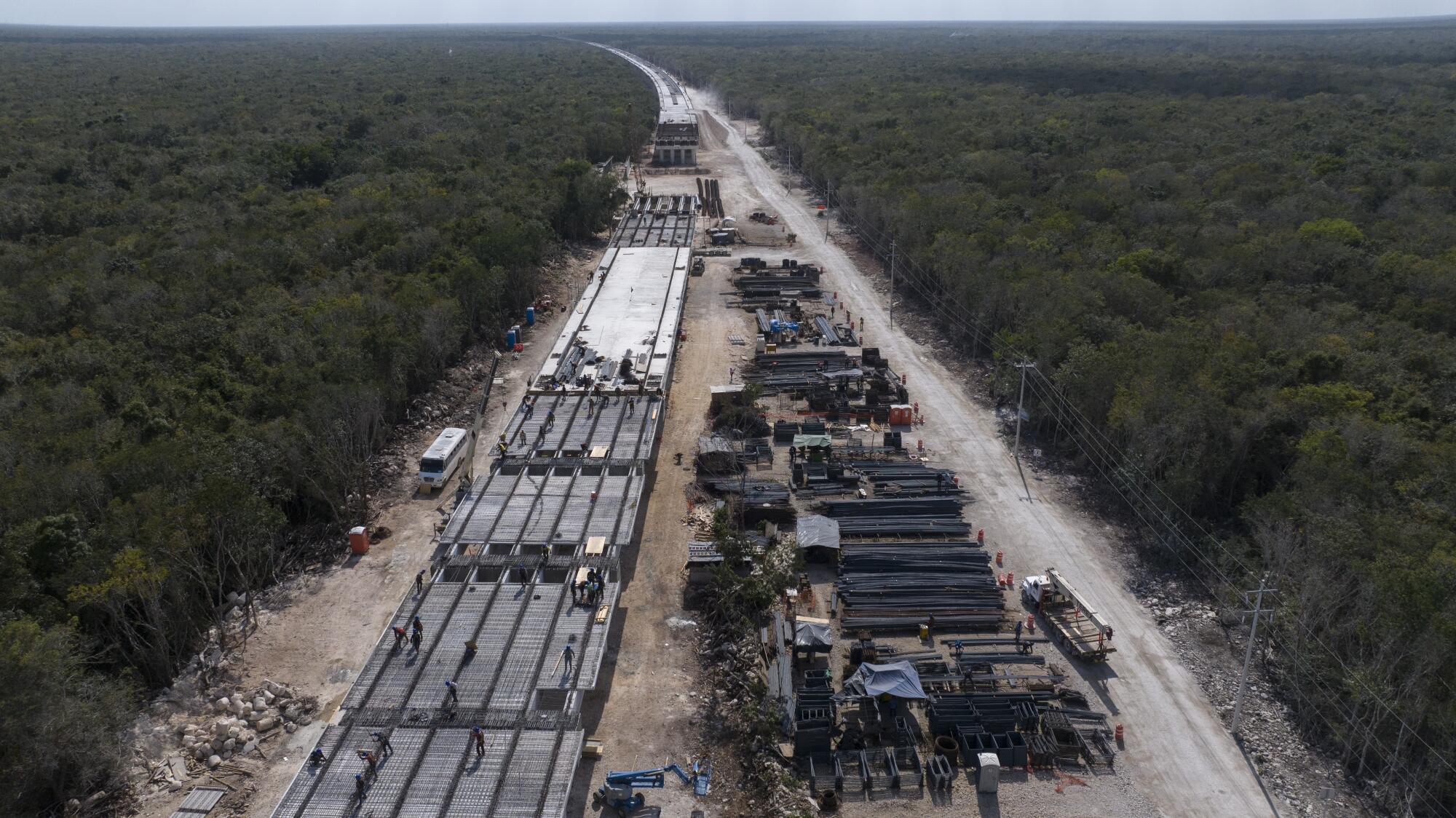
: :
To build the train, workers slashed a path the width of a football field across the Yucatán, a peninsula jutting between the Gulf of Mexico and the Caribbean Sea that is home to one of the Western Hemisphere’s largest rain forests.
Crews drilled steel pillars deep into the ground, disturbing a fragile ecosystem of thousands of caverns and freshwater sinkholes known as cenotes. They laid track on top of ancient Mayan villages and burial sites.
For critics, it was a sad irony than an effort to showcase the region’s riches has ended up harming them.
“They’re putting at risk the very thing they’re trying to sell,” said Rodrigo Castillo, a scuba diver and underwater photographer who has documented damage to the cenotes.

The train will eventually traverse five states and connect riders to dozens of stops — from the beaches of Cancun and Tulum to the vast archaeological ruins at Chichén Itzá and Palenque.

The president vowed to have it completed by the time he left office. But only about two-thirds of the route is up and running, and on those sections, just a handful of trains run each day.
Critics have questioned the design of the railway route, with stations often built many miles from towns or historical sites.
Tourists bound for the ancient Mayan city of Uxmal arrive at Maxcanú station, a 40-minute private taxi ride from the ruins. Those heading to the colonial city of Mérida are left 10 miles away in a pueblo called Teya.
In the port of Campeche, an air-conditioned bus whisks tourists from the train station to the city center. But in the town of Izamal, tourists wait 20 minutes in 95-degree heat while a lone station attention calls for taxis.
It takes only a few days aboard the train to see that the project is very much still in the throes of growing pains.
The ride is smooth, and carriages are clean and comfortable, with a cafe car stocked with warm tamales spiced with delicate herbs. But the train is not drawing anywhere near the number of promised passengers, with some cars hosting just a handful of riders. The railway is averaging 1,400 riders a day — far below the 37,000 the president predicted.
Many of those who were trying out the train this month were die-hard fans of López Obrador and eagerly posted online about their journeys. Other passengers said they had come for the novelty.
Robert McKay, an American retiree in his 80s who wore hiking boots, a safari shirt and a backpack, has explored every continent except Antarctica, and said he was thrilled at the idea of visiting pre-Hispanic ruins by rail.
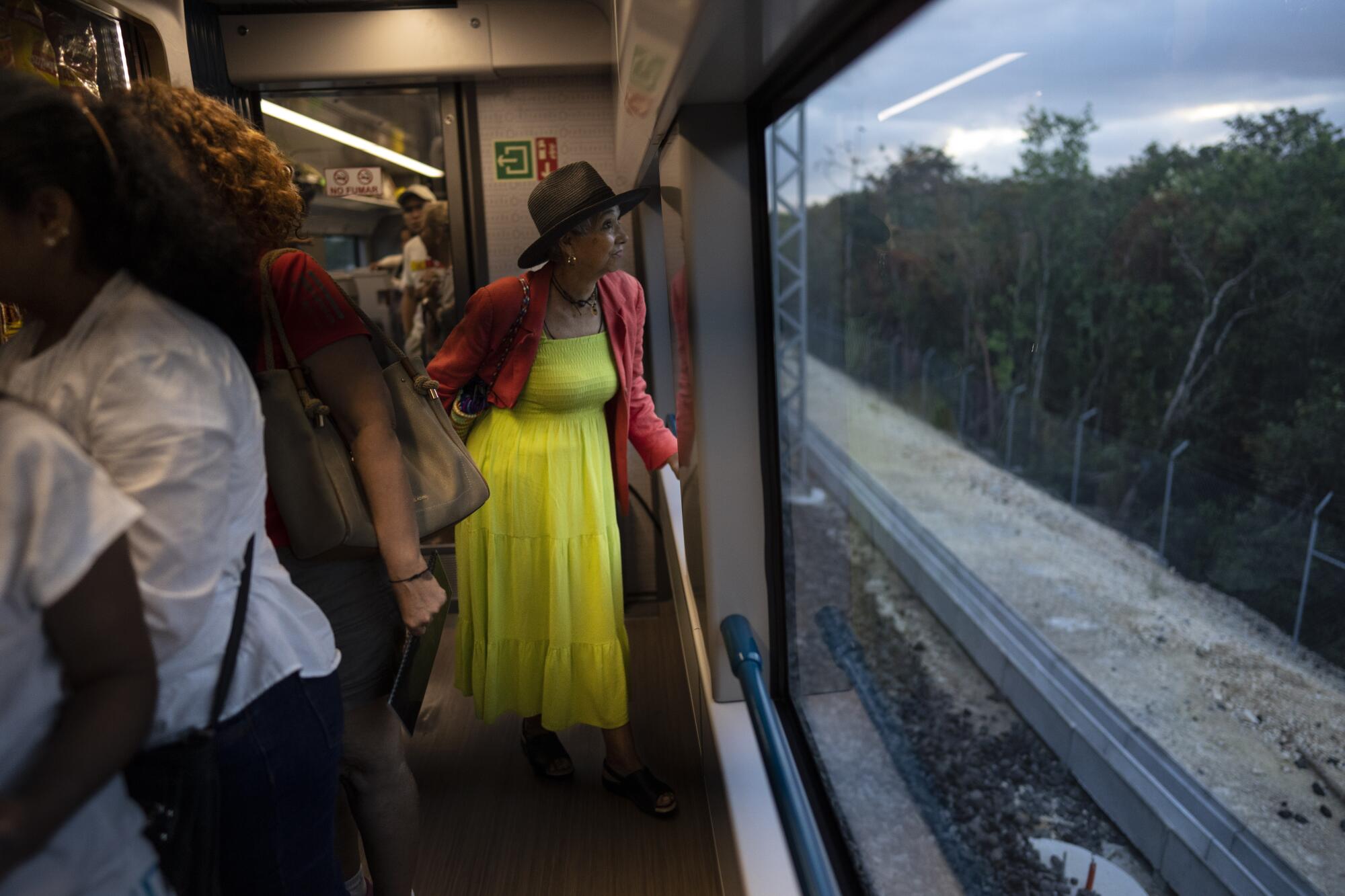
The train was unexpectedly nice, he said, and though the stations still lacked basic amenities like shops and cafes, they were lovely too. But he had trouble buying a ticket online, and his trip from Mérida to the town of Valladolid had been delayed six hours because of mechanical problems.
“It was a little frustrating,” he said. “I could have taken the bus.”
Eight-year-old Isabella Ayala, on the other hand, was in love. She had heard about the train on the news, and her parents had surprised her with a trip from Cancun, near their home in Playa del Carmen, to Palenque for her birthday. As the train glided past Hecelchakán station, not far from the ruins of Xcalumkin, Ayala and her favorite doll occupied two seats as her father, Manuel, read aloud from a Harry Potter book.
The train was cheaper — and safer — than taking a bus or driving a car, said Manuel, a 32-year-old teacher. “And it’s fun,” he said. “We’ve never had anything like this in Mexico.”
: :
López Obrador inaugurated the train project in 2018, a few weeks after he took office.
As incense burned at a ceremony led by Maya leaders, he performed a ritual asking Mother Earth for permission to build the train.
“This is an act of justice because this region has been the most abandoned,” he told the audience.
Hailing from the southern state of Tabasco, López Obrador won election on a promise to end entrenched corruption and reduce the income gap in a country riven by economic and racial inequalities that were accentuated by the North American Free Trade Agreement.
The1994 accord eliminated most tariffs across the continent and led to a boom of new factories in central and northern Mexico, but that only left southern Mexico further behind.
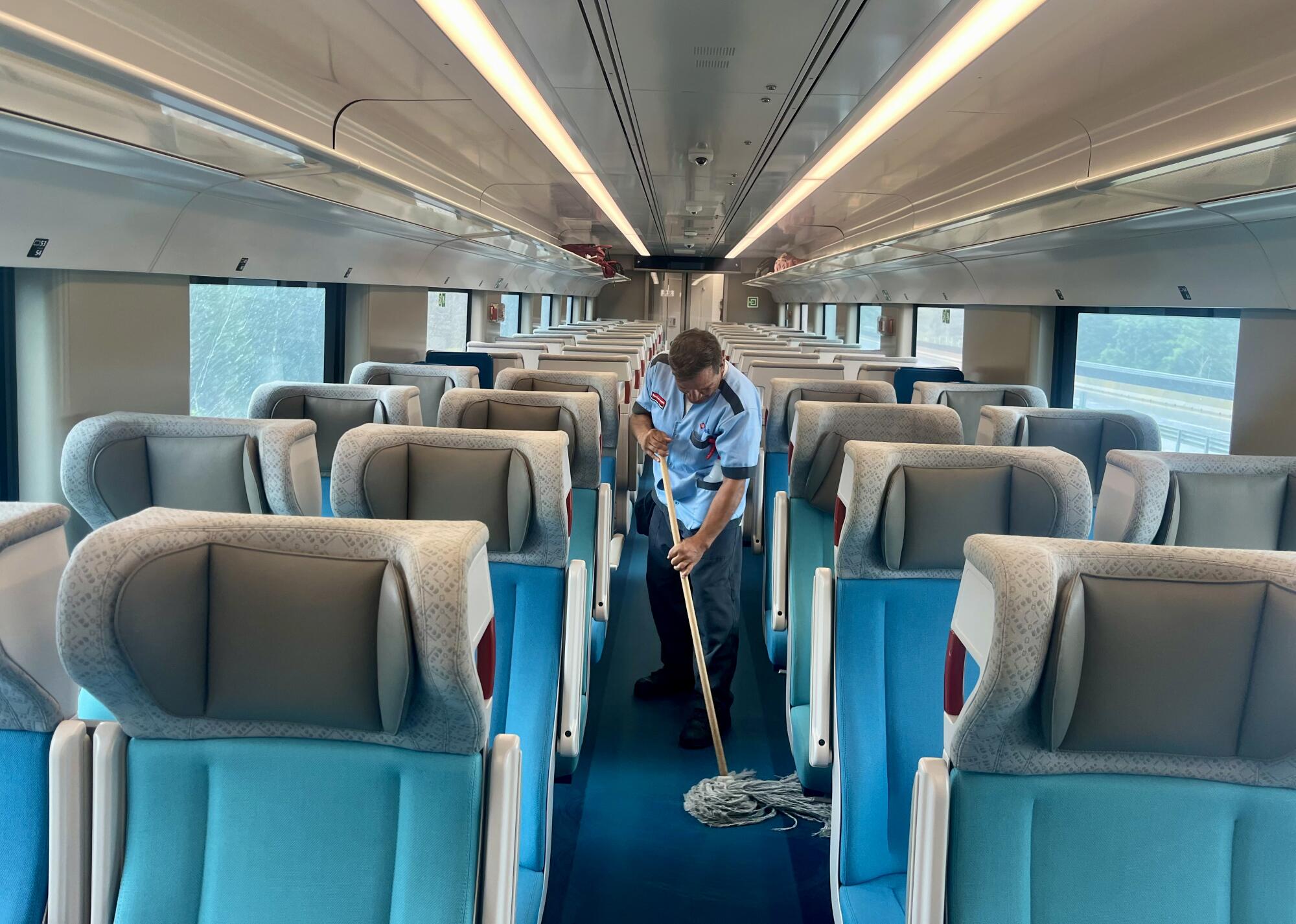
Locals in small towns along the train route say it has already delivered a much-needed injection of wealth into otherwise stagnant economies.
Wesley Chenchab, 50, a taxi driver from Izamal, said the train brought an explosion of construction jobs that meant that some young men no longer had to leave town to find work in Cancun. He’s seen a small uptick in passengers since the train opened.
“It’s simple,” he said. “More tourism means more work.”
He was impressed by López Obrador’s tenacity in pushing forward with the train despite opposition.
“A lot of people didn’t want it, didn’t want it, didn’t want it,” Chenchab said. “And he insisted, insisted, insisted. And now we’re beginning to see the fruits.”
He was well aware that López Obrador had been willing to bend democracy to get what he wanted, noting as the president’s recent push to overhaul the judicial system, a move that critics fear will give his ruling Morena party undue influence over the courts. But Chenchab applauded López Obrador for the tangible help he had delivered, including popular welfare payments to students and the elderly.
“He has his errors, like any human, but he’s so much better than the rest who promised and promised and never did anything,” Chenchab said.
For some, that may be López Obrador’s enduring legacy: He paid attention to a population that was used to getting very little.
“He’s a very intelligent politician,” said Castillo, the activist scuba diver. “And in the end he knew how to capitalize on social resentment.”
To hear his devotees tell it, López Obrador— who leaves office with a nearly 80% approval rating — has transformed how Mexicans viewed themselves.
Growing up in a rural stretch of Veracruz state, Felipe Morales Martinez, 63, sometimes felt embarrassed by his tan skin and for hailing from the south. The nation’s leaders and actors on its top television shows all seemed to aspire to be from Europe or the United States.
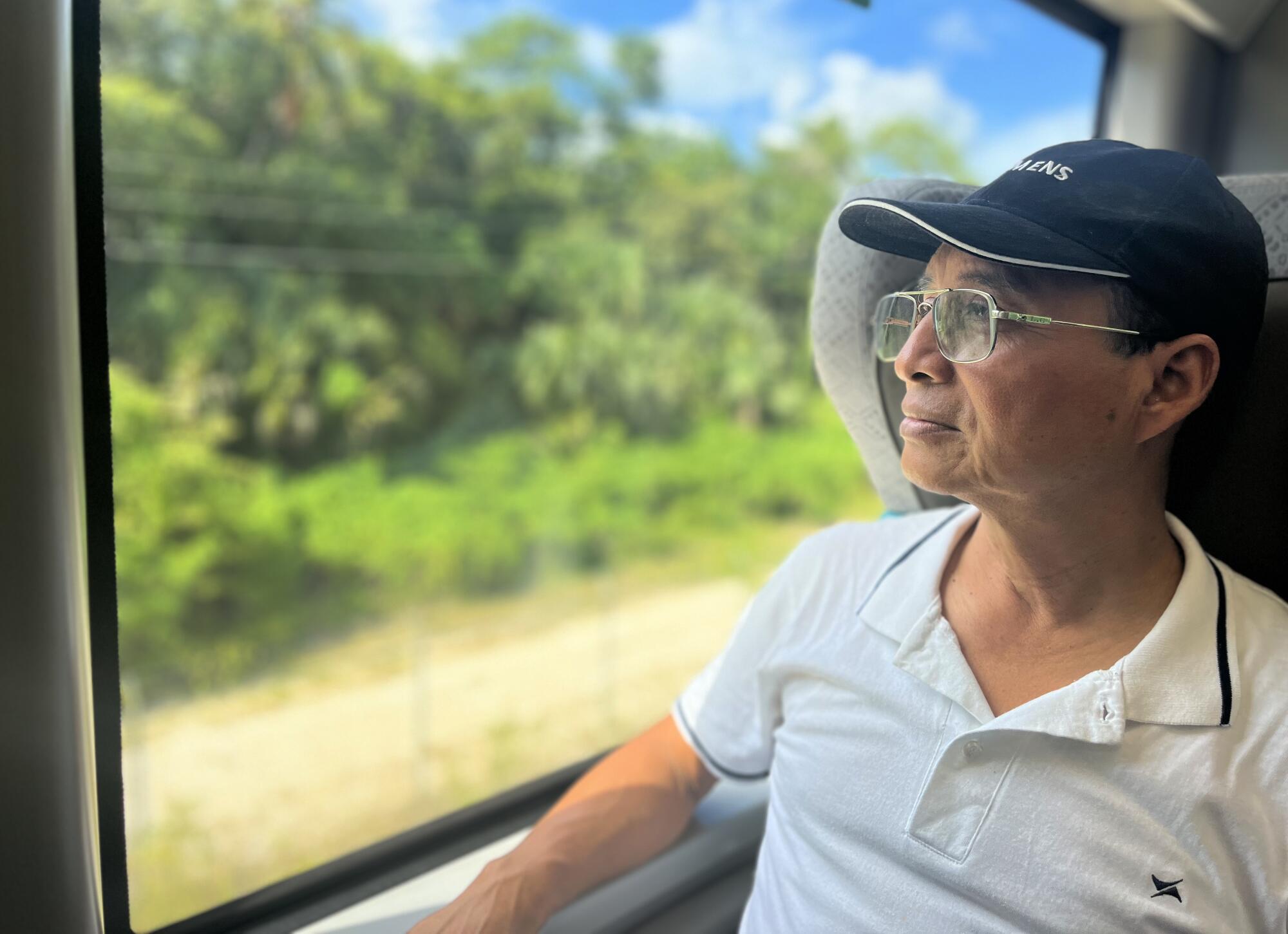
“You were bombarded with foreign culture,” said Morales, who as a young man left his poor village to find work at a foreign-owned factory in the central Mexican city of Queretaro.
When López Obrador was elected, Morales said, he felt something shift.
“When this president came and started to talk about Mexican culture, he instilled in us the greatness of our race,” Morales said. “I felt proud. He made us proud of our Aztec and Mayan roots.”
The train, he said, had done the same. He and one of his closest friends had ridden it from Palenque to Mérida and were taking it back to Palenque.
He said he hoped the railway would boost López Obrador’s reputation “as a person who loves Mexico and did everything he could for the good of all.”
More to Read
Sign up for Essential California
The most important California stories and recommendations in your inbox every morning.
You may occasionally receive promotional content from the Los Angeles Times.

